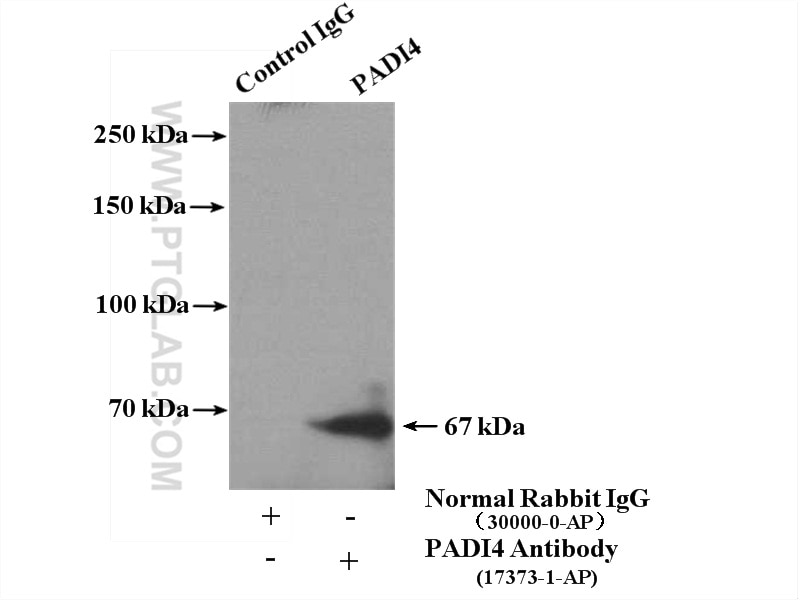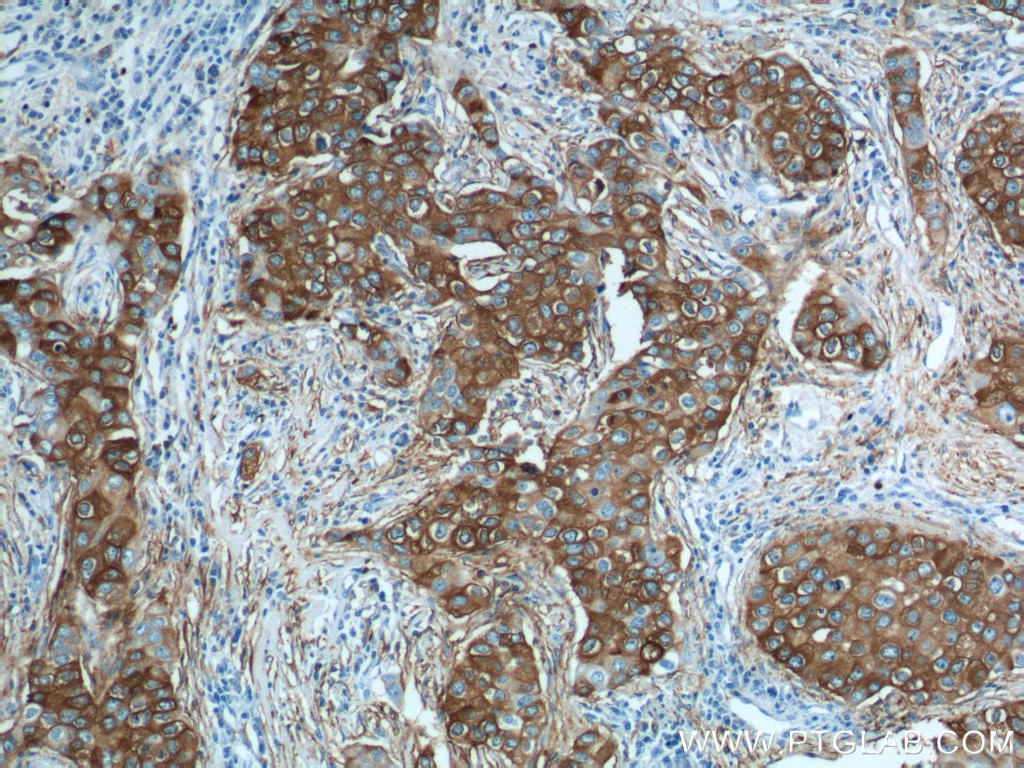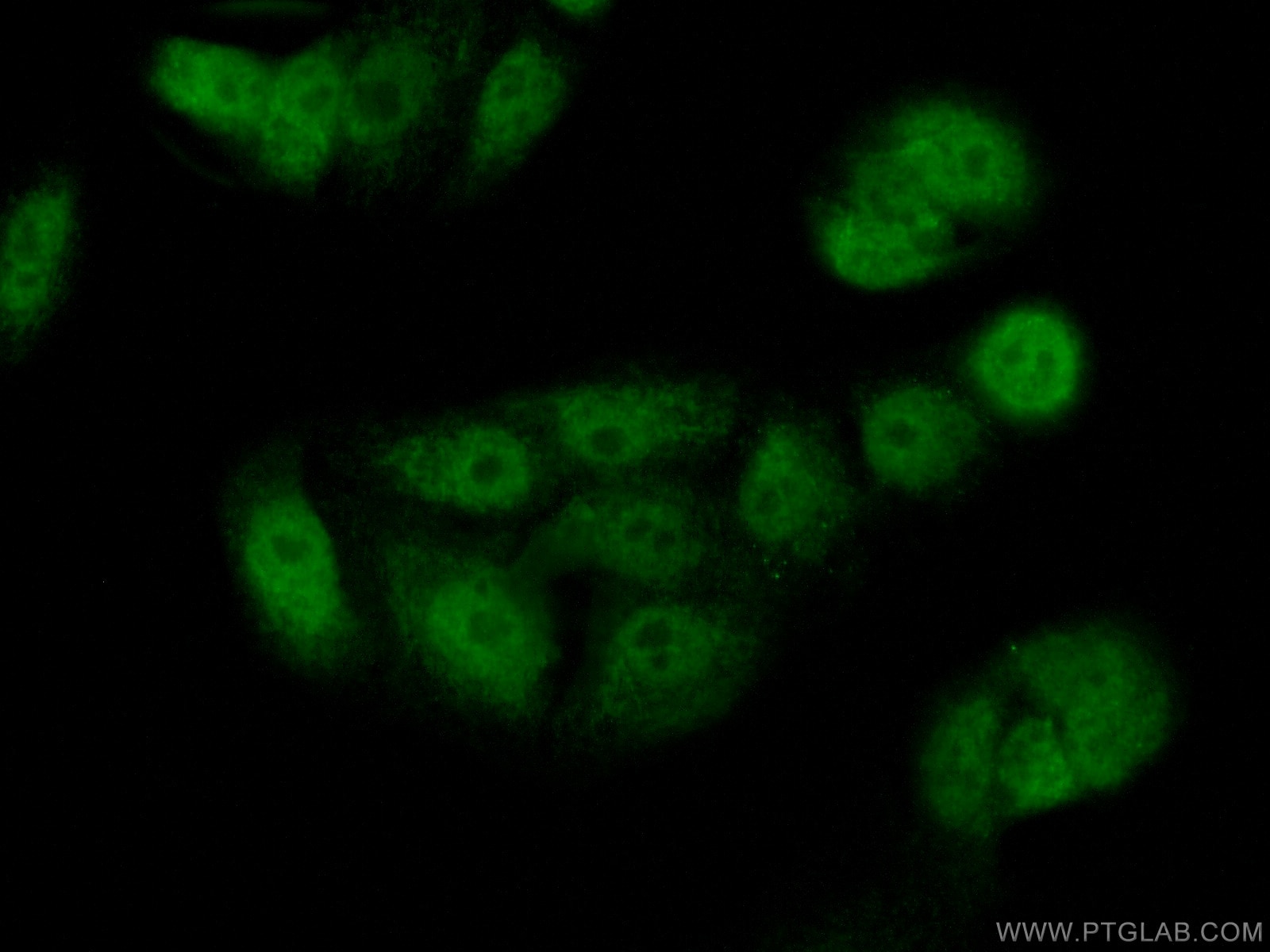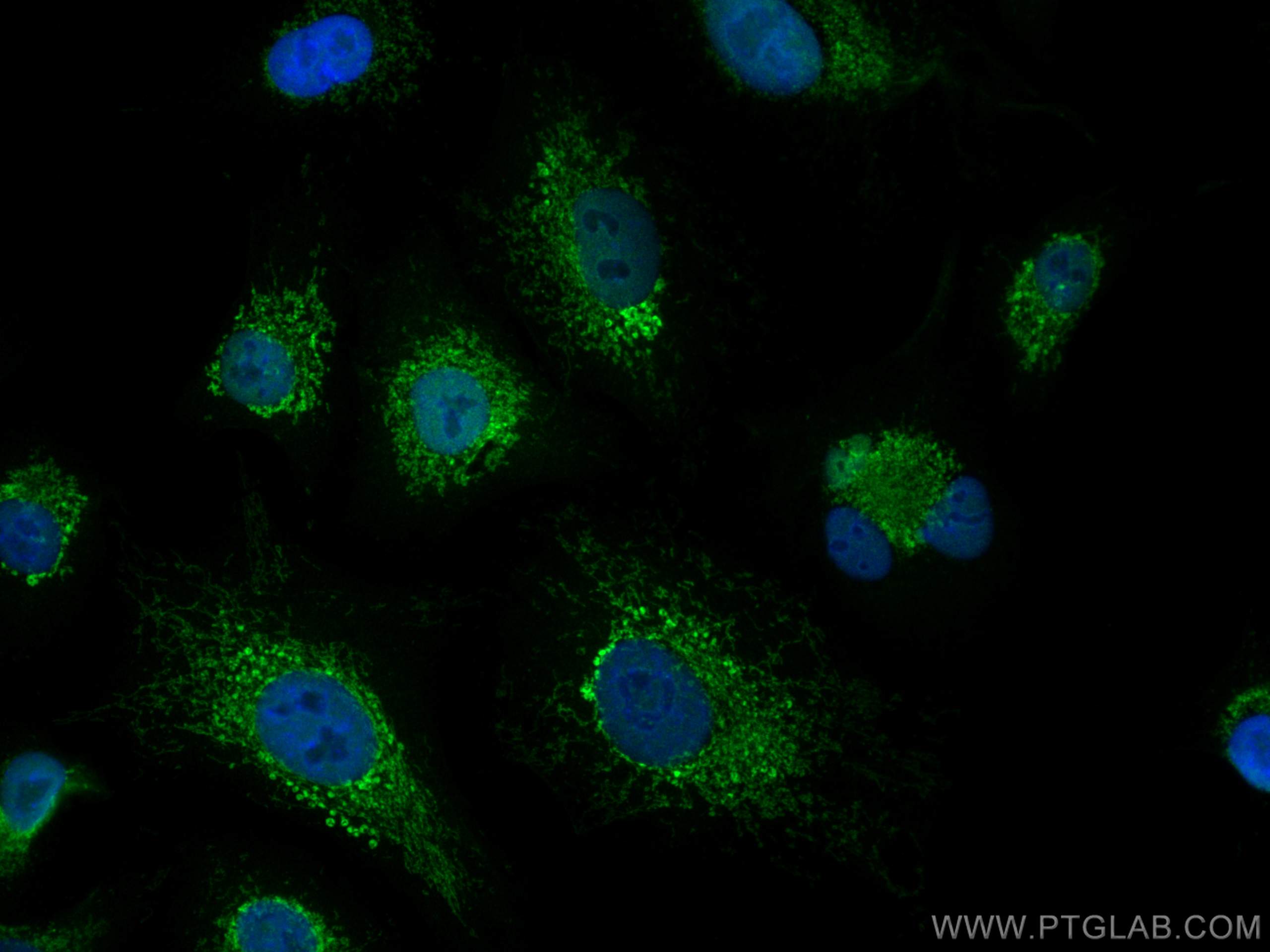- Phare
- Validé par KD/KO
Anticorps Polyclonal de lapin anti-PADI4
PADI4 Polyclonal Antibody for WB, IHC, IF/ICC, FC (Intra), IP, ELISA
Hôte / Isotype
Lapin / IgG
Réactivité testée
Humain, rat, souris
Applications
WB, IHC, IF/ICC, FC (Intra), IP, CoIP, ELISA
Conjugaison
Non conjugué
N° de cat : 17373-1-AP
Synonymes
Galerie de données de validation
Applications testées
| Résultats positifs en WB | cellules HEK-293, cellules C6, cellules HepG2, cellules RAW 264.7, protéine purifiée |
| Résultats positifs en IP | tissu splénique de souris |
| Résultats positifs en IHC | tissu de cancer du sein humain, tissu d'amygdalite humain, tissu de cancer du foie humain il est suggéré de démasquer l'antigène avec un tampon de TE buffer pH 9.0; (*) À défaut, 'le démasquage de l'antigène peut être 'effectué avec un tampon citrate pH 6,0. |
| Résultats positifs en IF/ICC | cellules A549, |
| Résultats positifs en FC (Intra) | cellules HeLa, |
Dilution recommandée
| Application | Dilution |
|---|---|
| Western Blot (WB) | WB : 1:1000-1:6000 |
| Immunoprécipitation (IP) | IP : 0.5-4.0 ug for 1.0-3.0 mg of total protein lysate |
| Immunohistochimie (IHC) | IHC : 1:50-1:500 |
| Immunofluorescence (IF)/ICC | IF/ICC : 1:200-1:800 |
| Flow Cytometry (FC) (INTRA) | FC (INTRA) : 0.40 ug per 10^6 cells in a 100 µl suspension |
| It is recommended that this reagent should be titrated in each testing system to obtain optimal results. | |
| Sample-dependent, check data in validation data gallery | |
Applications publiées
| KD/KO | See 2 publications below |
| WB | See 20 publications below |
| IHC | See 6 publications below |
| IF | See 13 publications below |
| IP | See 2 publications below |
| CoIP | See 1 publications below |
Informations sur le produit
17373-1-AP cible PADI4 dans les applications de WB, IHC, IF/ICC, FC (Intra), IP, CoIP, ELISA et montre une réactivité avec des échantillons Humain, rat, souris
| Réactivité | Humain, rat, souris |
| Réactivité citée | rat, Humain, souris |
| Hôte / Isotype | Lapin / IgG |
| Clonalité | Polyclonal |
| Type | Anticorps |
| Immunogène | PADI4 Protéine recombinante Ag11068 |
| Nom complet | peptidyl arginine deiminase, type IV |
| Masse moléculaire calculée | 663 aa, 74 kDa |
| Poids moléculaire observé | 67 kDa |
| Numéro d’acquisition GenBank | BC025718 |
| Symbole du gène | PADI4 |
| Identification du gène (NCBI) | 23569 |
| Conjugaison | Non conjugué |
| Forme | Liquide |
| Méthode de purification | Purification par affinité contre l'antigène |
| Tampon de stockage | PBS avec azoture de sodium à 0,02 % et glycérol à 50 % pH 7,3 |
| Conditions de stockage | Stocker à -20°C. Stable pendant un an après l'expédition. L'aliquotage n'est pas nécessaire pour le stockage à -20oC Les 20ul contiennent 0,1% de BSA. |
Informations générales
PADI4, also named PADI5 and PDI5, catalyzes the citrullination/deimination of arginine residues of proteins such as histones, thereby playing a key role in histone code and regulation of stem cell maintenance. PADI4 is expressed in hematologic and rheumatoid arthritis synovial tissues. PADI4 haplotype associated with susceptibility to rheumatoid arthritis increases the production of citrullinated peptides, leading, in a cytokine-rich milieu, to a break in tolerance to citrullinated peptides processed and presented in the appropriate HLA context. Immunohistochemistry detected significant PADI4 expression in various malignancies and PADI4 expression was not detected in non-tumor tissues. (PMID: 19183436)
Protocole
| Product Specific Protocols | |
|---|---|
| WB protocol for PADI4 antibody 17373-1-AP | Download protocol |
| IHC protocol for PADI4 antibody 17373-1-AP | Download protocol |
| IF protocol for PADI4 antibody 17373-1-AP | Download protocol |
| IP protocol for PADI4 antibody 17373-1-AP | Download protocol |
| Standard Protocols | |
|---|---|
| Click here to view our Standard Protocols |
Publications
| Species | Application | Title |
|---|---|---|
Int J Mol Sci Investigation of H2S Donor Treatment on Neutrophil Extracellular Traps in Experimental Colitis. | ||
RMD Open IL-6-PAD4 axis in the earliest phase of arthritis in knock-in gp130F759 mice, a model for rheumatoid arthritis. | ||
Transl Stroke Res Neutrophil Extracellular Traps may be a Potential Target for Treating Early Brain Injury in Subarachnoid Hemorrhage. | ||
FASEB J Neutrophil extracellular traps are critical for pregnancy loss in sphingosine kinase-deficient mice on 129Sv/C57BL/6 background. |















